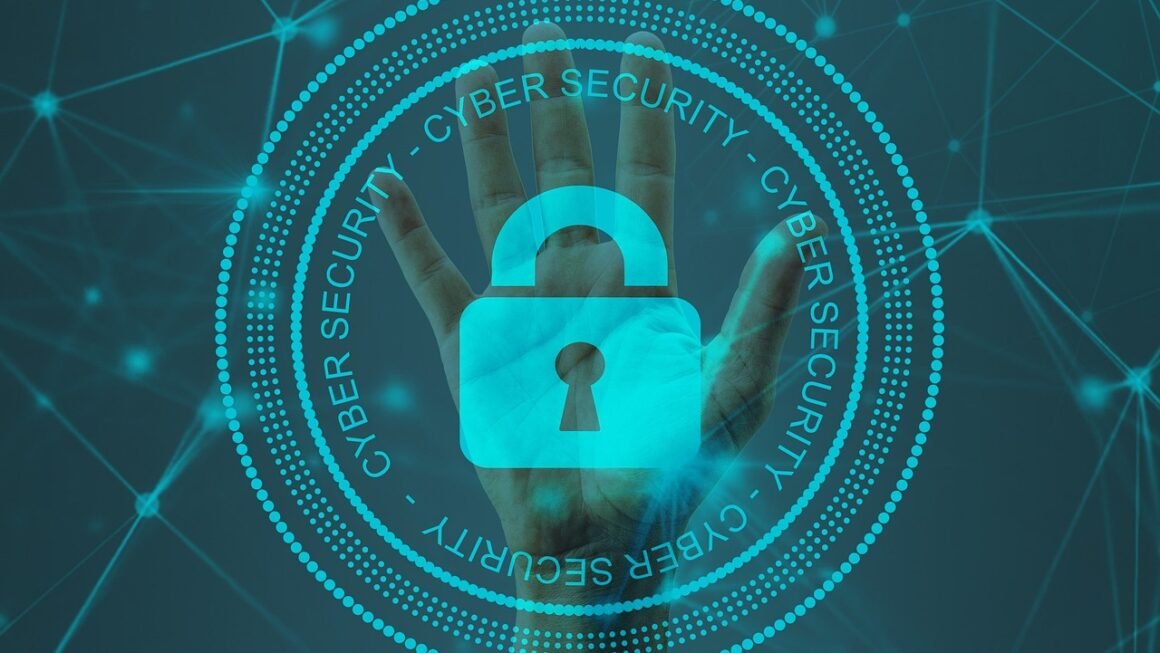Network security isn’t just a buzzword; it’s the backbone of a secure and thriving digital world. In an era where data breaches are becoming increasingly common and sophisticated, understanding and implementing robust network security measures is paramount for businesses of all sizes and individuals alike. This blog post will delve into the core aspects of network security, providing you with actionable insights and practical strategies to protect your valuable data and systems from cyber threats.
What is Network Security?
Defining Network Security
Network security encompasses all hardware and software actions an organization takes to protect the usability, reliability, integrity, and safety of its network and data. It involves creating a secure infrastructure for devices, applications, and users to function securely. This includes preventing unauthorized access, misuse, modification, or denial of the computer network and its accessible resources.
Why Network Security Matters
- Data Protection: Securing sensitive information like customer data, financial records, and intellectual property. Example: Imagine a hospital whose patient records are breached; the consequences for both the hospital and the patients are devastating.
- Maintaining Business Continuity: Preventing network outages and disruptions caused by cyberattacks. Example: A ransomware attack cripples a retail chain’s point-of-sale systems, halting sales and damaging reputation.
- Regulatory Compliance: Meeting legal and industry standards for data protection. Example: Organizations handling EU citizen data must comply with GDPR regulations, which mandates robust data security measures.
- Reputation Management: Preserving trust with customers and stakeholders by demonstrating a commitment to security. Example: A data breach announcement can significantly impact a company’s stock price and customer loyalty.
- Financial Protection: Avoiding costly fines, legal fees, and recovery expenses associated with security breaches. Example: The average cost of a data breach is in the millions, making prevention far more cost-effective than remediation.
Common Network Security Threats
Malware
Malware is a broad term encompassing various types of malicious software designed to harm computer systems.
- Viruses: Self-replicating code that attaches itself to files and spreads to other systems. Example: A virus spreads through email attachments, infecting computers and corrupting data.
- Worms: Self-replicating malware that spreads through networks without needing to attach to files. Example: The infamous WannaCry ransomware spread as a worm, rapidly infecting vulnerable systems across the globe.
- Trojans: Malicious software disguised as legitimate programs. Example: A seemingly harmless app downloaded from an untrusted source secretly installs a Trojan that steals user credentials.
- Ransomware: Malware that encrypts a victim’s files and demands a ransom payment for their release. Example: LockBit ransomware targets businesses, encrypting critical data and demanding millions in ransom.
- Spyware: Software that secretly monitors a user’s activity and collects data. Example: Keyloggers, a type of spyware, record keystrokes to steal passwords and other sensitive information.
Phishing
Phishing attacks attempt to trick users into divulging sensitive information through deceptive emails, websites, or messages.
- Spear Phishing: Highly targeted phishing attacks directed at specific individuals or organizations. Example: An attacker researches a company’s executives and crafts a personalized email that appears to be from a trusted colleague, requesting sensitive information.
- Whaling: Phishing attacks specifically targeting high-profile individuals like CEOs or CFOs. Example: A whaling attack impersonates a board member to trick the CEO into transferring a large sum of money.
- Smishing: Phishing attacks conducted via SMS text messages. Example: A text message claiming to be from a bank asks users to click a link and update their account information.
Denial-of-Service (DoS) and Distributed Denial-of-Service (DDoS) Attacks
DoS and DDoS attacks flood a network or server with traffic, making it unavailable to legitimate users.
- DoS: An attack launched from a single computer or network connection.
- DDoS: An attack launched from multiple, often compromised, computers (a botnet). Example: A botnet consisting of thousands of infected devices floods a website with requests, overwhelming its servers and causing it to crash.
Man-in-the-Middle (MitM) Attacks
MitM attacks intercept communication between two parties, allowing the attacker to eavesdrop, steal data, or manipulate the traffic. Example: An attacker intercepts the communication between a user and a bank’s website, stealing login credentials and financial information.
Insider Threats
Insider threats arise from individuals within an organization who have access to sensitive data and systems.
- Malicious Insiders: Employees or contractors who intentionally cause harm to the organization.
- Negligent Insiders: Employees who unintentionally compromise security due to carelessness or lack of training. Example: An employee accidentally shares a sensitive file with an unauthorized recipient, leading to a data breach.
Essential Network Security Tools and Technologies
Firewalls
A firewall acts as a barrier between a network and the outside world, controlling network traffic based on predefined rules.
- Network Firewalls: Protect entire networks by filtering traffic at the perimeter.
- Web Application Firewalls (WAFs): Protect web applications from specific attacks like SQL injection and cross-site scripting (XSS). Example: A WAF can identify and block malicious requests containing SQL injection code, preventing attackers from gaining access to a database.
Intrusion Detection and Prevention Systems (IDS/IPS)
IDS and IPS monitor network traffic for malicious activity and take action to prevent or mitigate attacks.
- IDS: Detects suspicious activity and alerts administrators.
- IPS: Automatically blocks or mitigates detected threats. Example: An IPS can detect a DDoS attack in progress and automatically block the malicious traffic, preventing the website from being overwhelmed.
Virtual Private Networks (VPNs)
VPNs create secure, encrypted connections between devices and networks, protecting data from eavesdropping. Example: Employees working remotely can use a VPN to securely access the company network, protecting sensitive data from being intercepted on public Wi-Fi networks.
Antivirus and Anti-malware Software
Antivirus and anti-malware software detect and remove malicious software from computers and other devices. Example: Regularly scanning computers with antivirus software can prevent malware from infecting systems and stealing data.
Endpoint Detection and Response (EDR)
EDR solutions provide advanced threat detection and response capabilities on individual endpoints (computers, laptops, etc.). Example: An EDR solution can detect and block ransomware that has bypassed traditional antivirus software, preventing it from encrypting files.
Security Information and Event Management (SIEM)
SIEM systems collect and analyze security logs from various sources, providing a centralized view of security events. Example: A SIEM can correlate security logs from firewalls, intrusion detection systems, and servers to identify suspicious patterns and potential security breaches.
Best Practices for Network Security
Strong Passwords and Multi-Factor Authentication (MFA)
- Use strong, unique passwords for all accounts.
- Implement MFA to add an extra layer of security. Example: Requiring users to enter a code sent to their mobile phone in addition to their password makes it much harder for attackers to gain access to accounts.
Regular Security Audits and Vulnerability Assessments
- Conduct regular security audits to identify weaknesses in your network security posture.
- Perform vulnerability assessments to identify and remediate security vulnerabilities in your systems. Example: Running a vulnerability scanner can identify outdated software versions or misconfigured settings that could be exploited by attackers.
Security Awareness Training
- Educate employees about common cyber threats and how to avoid them.
- Conduct regular security awareness training sessions and phishing simulations. Example: Training employees to recognize and report phishing emails can significantly reduce the risk of successful phishing attacks.
Patch Management
- Keep all software and systems up-to-date with the latest security patches.
- Implement a robust patch management process to ensure that patches are applied promptly. Example: Exploiting known vulnerabilities in outdated software is a common attack vector. Regularly patching systems closes these security holes.
Network Segmentation
- Divide the network into smaller, isolated segments to limit the impact of a security breach.
- Use firewalls and access control lists to restrict communication between segments. Example: Segmenting a network so that the accounting department is isolated from the marketing department can limit the spread of malware if one segment is compromised.
Data Encryption
- Encrypt sensitive data both in transit and at rest.
- Use strong encryption algorithms and key management practices. Example: Encrypting hard drives and databases protects sensitive data from unauthorized access if a device is lost or stolen.
Incident Response Plan
- Develop a comprehensive incident response plan to guide your actions in the event of a security breach.
- Regularly test and update the plan to ensure its effectiveness. Example: An incident response plan should outline the steps to take to contain a breach, eradicate the threat, recover data, and notify affected parties.
Conclusion
Securing your network is an ongoing process that requires vigilance, proactive measures, and continuous adaptation to evolving threats. By understanding the key concepts, implementing the right tools and technologies, and following best practices, you can significantly reduce your risk of becoming a victim of cybercrime and protect your valuable assets. Network security is not just an IT issue; it’s a business imperative. Embrace it and make it a priority.



